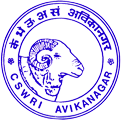|
|
|
|
|
 |
|
 |
|
Meat Science and Pelt Technology
Meat production and consumption has increased remarkably in recent years in the country. Meat is one of the important components of human diet. Demand for quality meat and meat products are increasing due to growing awareness about nutritional and sensory characteristics of such meat products. Changing socio-economic status has also contributed for the enhanced consumption of processed and convenience meat products. As the demand for ready to eat meat products is ever growing due to rapid urbanization and industrialization, a lot of efforts are needed to meet such increasing demands. Variety of meat based products meat balls/koftas, patties, nuggets, meat pickles and sausages are developed by the Institute from sheep meat and many of them are now available in the market. In the Meat Science and Pelt Technology Section research is mainly carried out on two aspects viz: Carcass evaluation of different species (sheep, goat) and development of value added convenience mutton products.
Major achievements
- The finisher lambs maintained on grazing and ad lib concentrate mixture feeding and slaughtered at 6 months of age provided hot carcass weight of 14-15 kg with dressing yield of 50-51%. Average lean, fat (subcutaneous and intra muscular fat) and bone contents of 50-54%, 18-20% and 21-22%, respectively.
- Garole has similar carcass and meat quality to Malpura or their crossbreds. Garole has overall better meat quality in comparision to Malpura rams. Malpura hoggets has higher pre-slaughter weight as compared to Garole. Malpura x Garole has higher dressing yield on live weight basis than Malpura and Garole.
- Carcass characteristics of new developed strain A (GMM X Patanwadi) studied. New strain A has average pre-slaughter weight, dressing on ELW, loin eye area, caul fat and kidney fat of 43.69 kg, 53.65 %, 16.49 cm2, 0.28 kg and 0.14 kg, respectively with lean, fat and bone content of 56.87, 9.04 and 29.59 %, respectively. GMM X Patanwadi (A) genotype is more suitable than Patanwadi X GMM (B) for mutton production due to higher body weight and thereby more meat yield.
- Carcass traits of Malpura weaner lambs (6 month old) maintained on complete feed containing microbial feed additives under intensive feeding evaluated. The supplementation of microbial probiotics Saccharomyces cerevisiae and Lactobacilli in the ration of lambs provided additional body weight of 3.32 kg, hot carcass weights of 3.16 kg. Dressing yield on ELW improved from 56.24 to 59.30%.
- Supplementation of rumen protected fat at 4.0% level in cull ewe’s and lamb’s diet increased pre-slaughter weights and carcass yield but did not improve meat quality.
- Spent ewes of BCS 3.0 to 3.5 yielded quality carcasses with desirable lean and fat contents.
- Suitable age and weight for slaughter has been considered around 12 week of age or up to 2.0 kg body weight for better meat yield and quality.
- Meat sausage, nuggets, mutton patties, meat pickle, mutton soup, enrobed eggs, meat loaf, enrobed mutton nuggets, mutton kofta and restructured meat products developed.
- In meat processing wheat or chick pea flour (@3%) in meat product formulation resulted in better yield.
- For natural casings hydrogen peroxide (0.06%) or per-acetic acid (0.1%) can be very effective deslimer for enhancing their keeping quality.
|
|
|
 |
|
 |
|
|
|
|
|


